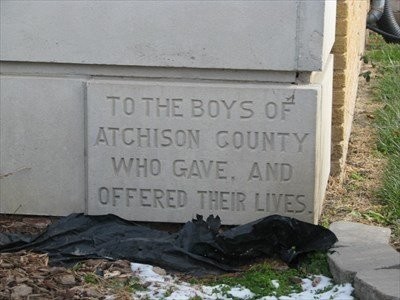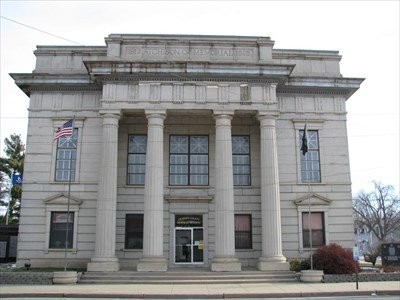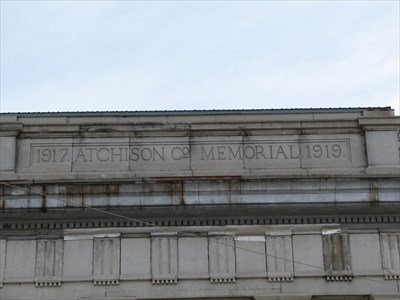The Atchison County Memorial Building
Introduction
Text-to-speech Audio
Images
The plaque showing thanks to the men of Atchison County for their service to their country. The Missouri General Assembly supported the memorial building and by providing a grant of matching funds from Atchison County.

A frontal view of the building showing the neo-classical design with the four Doric columns holding up the front of the building.

The inscription on top of the building along with the dates that the United States was involved in World War I.

Backstory and Context
Text-to-speech Audio
In 1919, the Missouri legislature passed a law granting up to $115,000 for every county in the state to create a memorial civic building. The law required local communities to raise matching funds, and residents of Atchison County responded quickly in raising funds that allowed them to begin construction of this building in 1919. The building serves as both a community building with a large theater and other public spaces, and as a memorial to local veterans who perished or returned home following the Great War.
The building features the neo-classical design two story Classical Revival style. On the outside are four fluted Doric order columnns supporting the building with frieze work. The building is 107 feet deep and 63 feet wide. There is a plaque on the lower right hand corner of the building honoring the veterans. The memorial building was used extensively before the coming of television to host dance bands and theater groups. The building has a 700 seat theater on the second floor. School activities were also held in the building. The memorial building is still used today to host theater groups and organizations.
